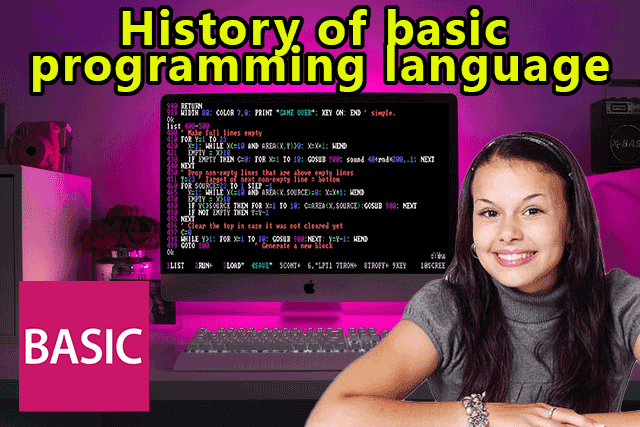History of basic programming language, The Basic programming language is one of the primitive and simple programming languages and is one of the most popular languages, and it is an abbreviation for (Beginners All Purposes Symbolic Instruction Code), and this language was designed and developed by John Kemeny and Thomas Kurtz in 1964 and is largely based on FORTRAN programming language.
The aim of developing this language was to create an educational tool for undergraduate students; This language constituted an easy step into the world of programming languages, and until not so long ago BASIC was known in its various forms such as (Visual Basic) and (Visual Basic .net) and it was widely used among developers.
Advantages and characteristics of the BASIC programming language
- The BASIC language is simple and easy, so it has been adopted to teach introductory concepts to programming.
- BASIC can be used by people with little knowledge of mathematics.
- BASIC supports audio and graphics and is used in many commercial applications.
- Providing a lot of resources to learn the Basic language, such as books, websites, and others, due to the spread of the language and its prevalence.
- BASIC provides a variety of tools that can be downloaded from the Internet.
- BASIC allows the creation of functions and the use of defined functions.
- BASIC allows input from the keyboard.
- BASIC allows for loops to be created.
Cons of BASIC programming language
- BASIC is a slow language compared to other programming languages.
- Not suitable for game programming.
List of basic commands in the Basic programming language
- Hello: Used when logging in and starting a new session.
- NEW: Start writing the program.
- OLD: Go back and recover an old program that was written previously.
- LIST: Used to display the current program.
- SAVE: Used to save the current program.
- UNSAVE: Clear the current program from the volume.
- CATALOG: View the names of the programs in the volume.
- SCRATCH: Used to clear the current program without clearing its name.
- RENAME: Used to change the name of the current program without deleting it.
- RUN: Used to execute the current program.
- STOP: Used to stop the program if it is in an infinite loop.
- BYE - GOODBYE: Used to end the current program.













